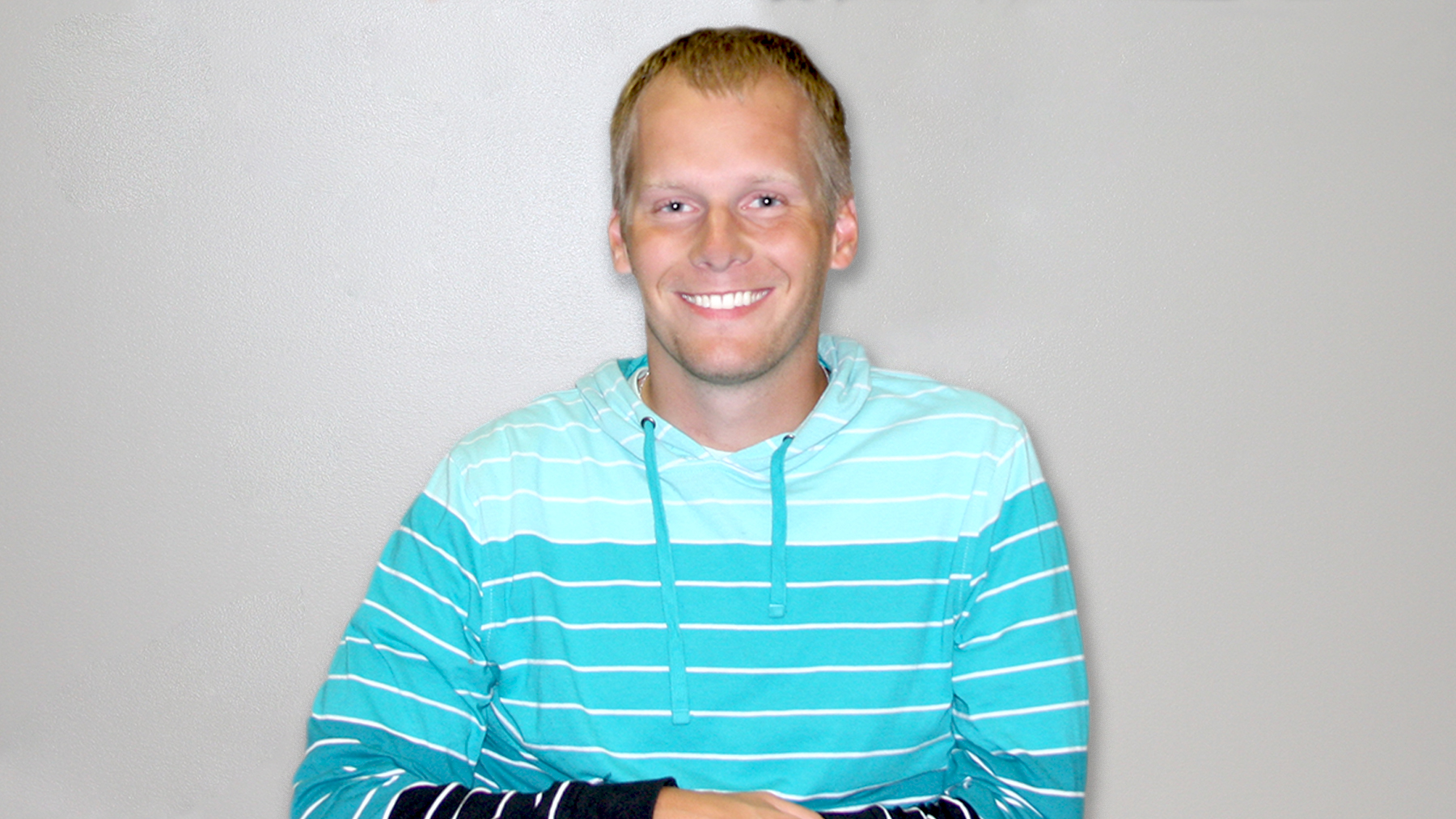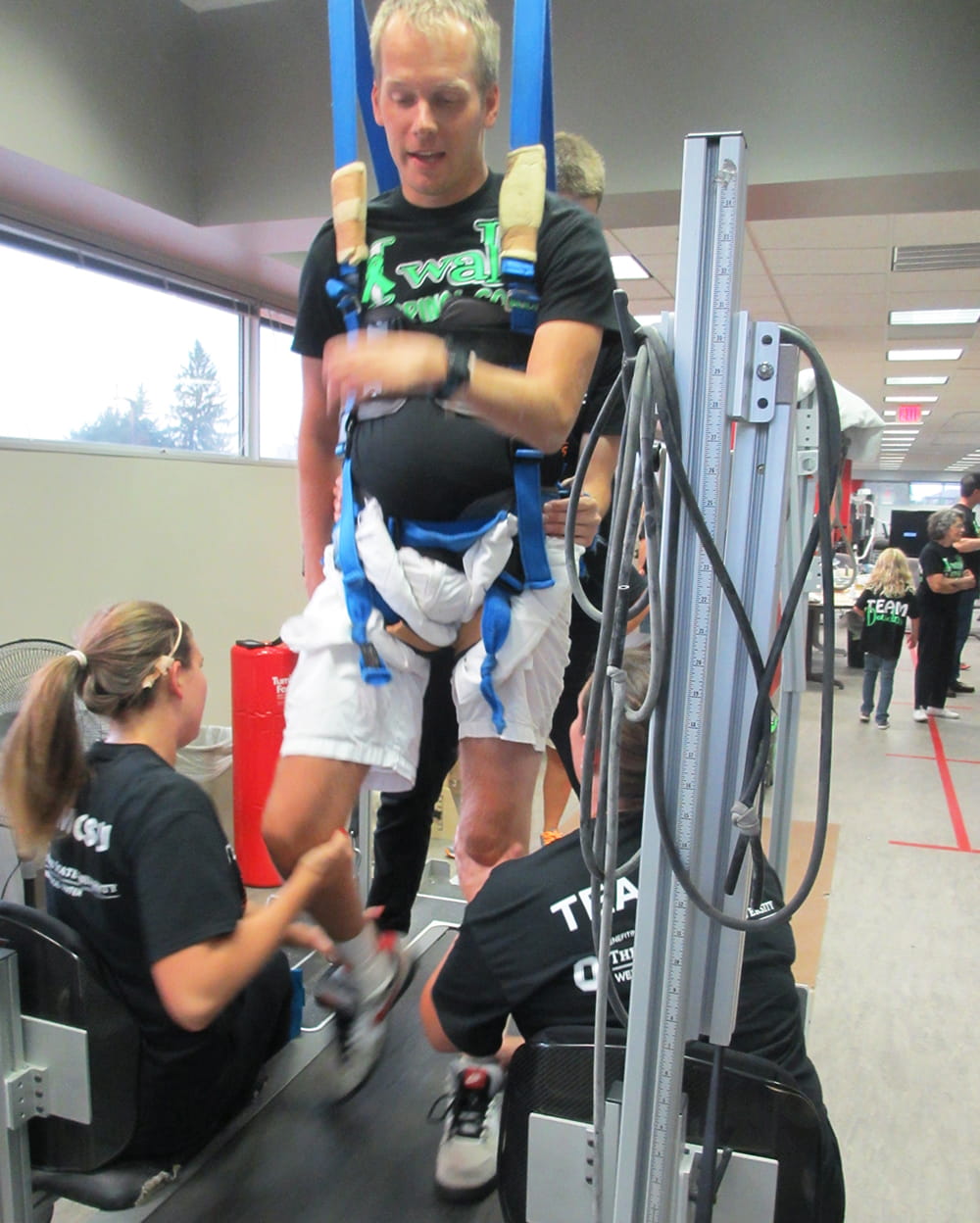Alum finds happiness in spinal rehab after college car wreck
 As an engineering student at Ohio State, Adam excelled academically, motivated his peers as captain of the waterskiing team and led the group to a national title in 2010.
As an engineering student at Ohio State, Adam excelled academically, motivated his peers as captain of the waterskiing team and led the group to a national title in 2010.
Diagnosed with bipolar disorder in 2008, he experienced a manic episode (a state of extreme energy and confidence that can lead to reckless behavior) three months after his national championship victory that resulted in a high-speed car crash, leaving him paralyzed from the chest down.
“Adam’s injury was one of the more severe that I had worked with,” says Marisa Brown, his physical therapist at the Outpatient Rehabilitation Center, part of the Neurological Institute at The Ohio State University Wexner Medical Center.
Spinal cord injuries often require intense rehabilitation, and Adam’s initial progress toward walking was slow, leaving him frustrated and unmotivated.
“He wasn’t really interested in the small things like dressing himself or moving from his wheelchair to his bed,” Brown says.
Adam was only interested in walking, and he started to lose hope.
“They say the first year after a spinal cord injury is the hardest, and I was still battling depression,” he says.
It took months before he stopped feeling like nothing would happen for him, he adds.
Part of Adam’s turnaround in attitude came from meeting optimistic patients and therapists at Dobb Rehabilitation Hospital.
“Coming to therapy every day and being surrounded by these therapists who had such positive attitudes really rubbed off on me,” he says.
Here is what physical therapy is like for Adam:
- He goes five days a week for two hours a day.

- For locomotor training, he is suspended upright in a harness over a treadmill.
- Therapists move his legs to simulate walking. This helps the nervous system relearn the skill.
- For overground training, Adam sits on a mat to improve his balance. This helps him with everyday activities such as sitting upright on his bed, a task he previously could not do for more than a few seconds.
- He also practices reaching forward for objects to strengthen his core muscles, which lost much of their function following his injury. (See him in action in the video below.)
Through therapy, Adam has regained some movement in his arms and strengthened his core. He renewed his spark for life too.
“His therapy quickly transitioned to us asking him, ‘What makes you happy in life, Adam, and how can we help you with that process?’” Brown explains.
Adam realized that he enjoyed sharing his story. With this new passion, his attitude instantly changed.
“He went from depressed and unmotivated to the complete opposite end of the spectrum,” Brown says.
“The ultimate lesson I learned is that the mind is much more powerful than the body, and I think that’s why I can still have a fulfilling life,” Adam says.
“Conversation–being able to talk, listen and be there for others is what’s important.”
Now a motivational speaker, author and life coach, Adam encourages people to focus on what can be achieved instead of what can’t. He graduated from Ohio State with a civil engineering degree in 2012 and has returned to water skiing using a modified board that allows him to remain seated.
“You may feel like you have less because so much was taken away, but you actually realize how much you have once you go through a difficult experience like this.”





